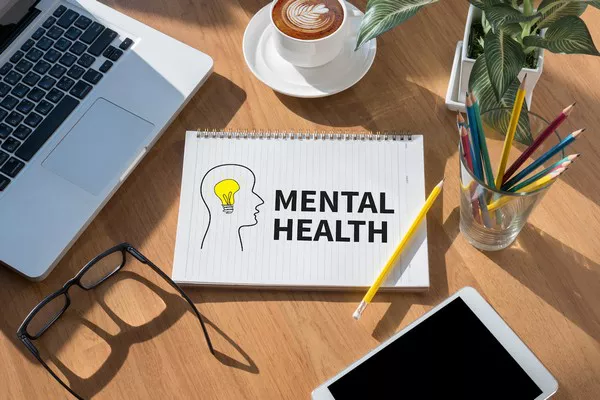Bipolar disorder, often referred to as manic-depressive illness, is a mental health condition characterized by extreme mood swings, affecting millions of people worldwide. While it can be a challenging condition to navigate, understanding its symptoms, types, available treatments, and the importance of support is crucial for individuals, their loved ones, and society as a whole. In this comprehensive guide, we will explore the various aspects of bipolar disorder, shedding light on its complexities and offering insights into managing the condition effectively.
Defining Bipolar Disorder
1. Mood Swings: Bipolar disorder involves intense mood swings that fluctuate between episodes of mania and depression. These mood shifts can significantly impact an individual’s daily life, relationships, and overall well-being.
2. Spectrum of Severity: Bipolar disorder exists on a spectrum, ranging from mild to severe. Some individuals may experience infrequent episodes, while others may have more frequent and intense mood fluctuations.
Types of Bipolar Disorder
1. Bipolar I Disorder: Bipolar I disorder is characterized by manic episodes that can last for at least seven days, often requiring hospitalization. Depressive episodes may also occur, lasting for at least two weeks.
2. Bipolar II Disorder: Bipolar II disorder involves hypomanic episodes, which are less severe than full-blown manic episodes. Depressive episodes remain a significant feature of this type.
3. Cyclothymic Disorder: Cyclothymic disorder presents as milder but more chronic mood swings, with periods of hypomania and mild depression lasting for at least two years.
Recognizing Symptoms
1. Manic Episodes: Manic episodes involve heightened energy levels, impulsivity, decreased need for sleep, inflated self-esteem, and engaging in risky behaviors.
2. Depressive Episodes: Depressive episodes encompass feelings of sadness, hopelessness, loss of interest, changes in appetite, fatigue, and thoughts of death or suicide.
Diagnosing Bipolar Disorder
1. Professional Evaluation: Diagnosing bipolar disorder requires a thorough assessment by a qualified mental health professional. This typically involves interviews, mood tracking, and analysis of medical history.
2. Differential Diagnosis: Distinguishing bipolar disorder from other mental health conditions, such as major depressive disorder, is essential for accurate diagnosis and appropriate treatment.
Treatment Approaches
1. Medication: Medications, including mood stabilizers, antipsychotics, and antidepressants, are often prescribed to manage the symptoms of bipolar disorder. Individual response to medications varies.
2. Psychotherapy: Psychotherapy, such as cognitive-behavioral therapy (CBT) and dialectical behavior therapy (DBT), can help individuals learn coping strategies, manage triggers, and develop healthier thought patterns.
3. Lifestyle Modifications: Healthy lifestyle choices, including regular exercise, sufficient sleep, balanced nutrition, and stress management, can complement medical treatment and promote stability.
Importance of Support
1. Family and Friends: A strong support system of family and friends can have a significant positive impact on individuals with bipolar disorder. Their understanding and encouragement contribute to the individual’s well-being.
2. Support Groups: Participating in support groups, either in-person or online, provides individuals with bipolar disorder a sense of belonging, understanding, and shared experiences.
Managing Triggers
1. Identifying Triggers: Recognizing triggers that may contribute to mood episodes is essential for managing bipolar disorder effectively. Common triggers include stress, sleep disruptions, and substance use.
2. Developing Coping Strategies: Learning healthy coping mechanisms, such as mindfulness, relaxation techniques, and effective communication, empowers individuals to manage their responses to triggers.
Achieving Stability
1. Treatment Adherence: Consistently following the prescribed treatment plan, including medication and therapy sessions, is crucial for achieving and maintaining stability.
2. Self-Care: Prioritizing self-care and well-being supports individuals in managing their condition, preventing relapses, and leading fulfilling lives.
Raising Awareness
1. Reducing Stigma: Raising awareness about bipolar disorder helps reduce stigma and misconceptions surrounding mental health conditions, encouraging open conversations and seeking help when needed.
2. Educational Initiatives: Educational initiatives in schools, workplaces, and communities contribute to fostering a more compassionate and informed society regarding mental health.
Conclusion
In conclusion, bipolar disorder is a complex mental health condition characterized by extreme mood swings that impact various aspects of an individual’s life. Recognizing the symptoms, understanding the types, and seeking proper diagnosis and treatment are essential steps toward effective management. By incorporating medication, therapy, lifestyle adjustments, and support from loved ones, individuals with bipolar disorder can achieve stability and enhance their overall quality of life. Education, awareness, and destigmatization play vital roles in creating a more compassionate and inclusive environment for individuals living with bipolar disorder. As we continue to learn and share knowledge about this condition, we contribute to a society that values mental health and empowers those affected to lead fulfilling and meaningful lives.


